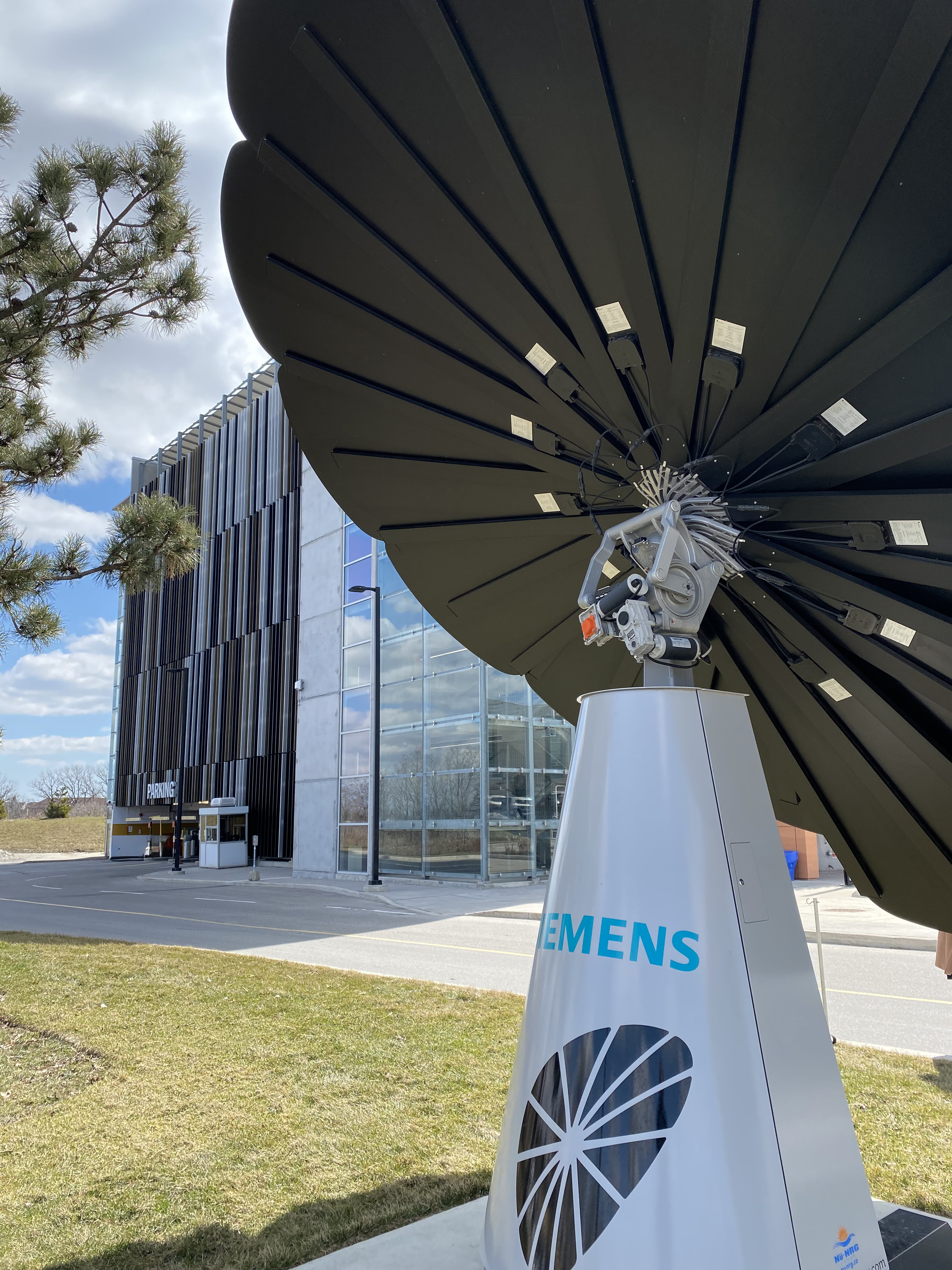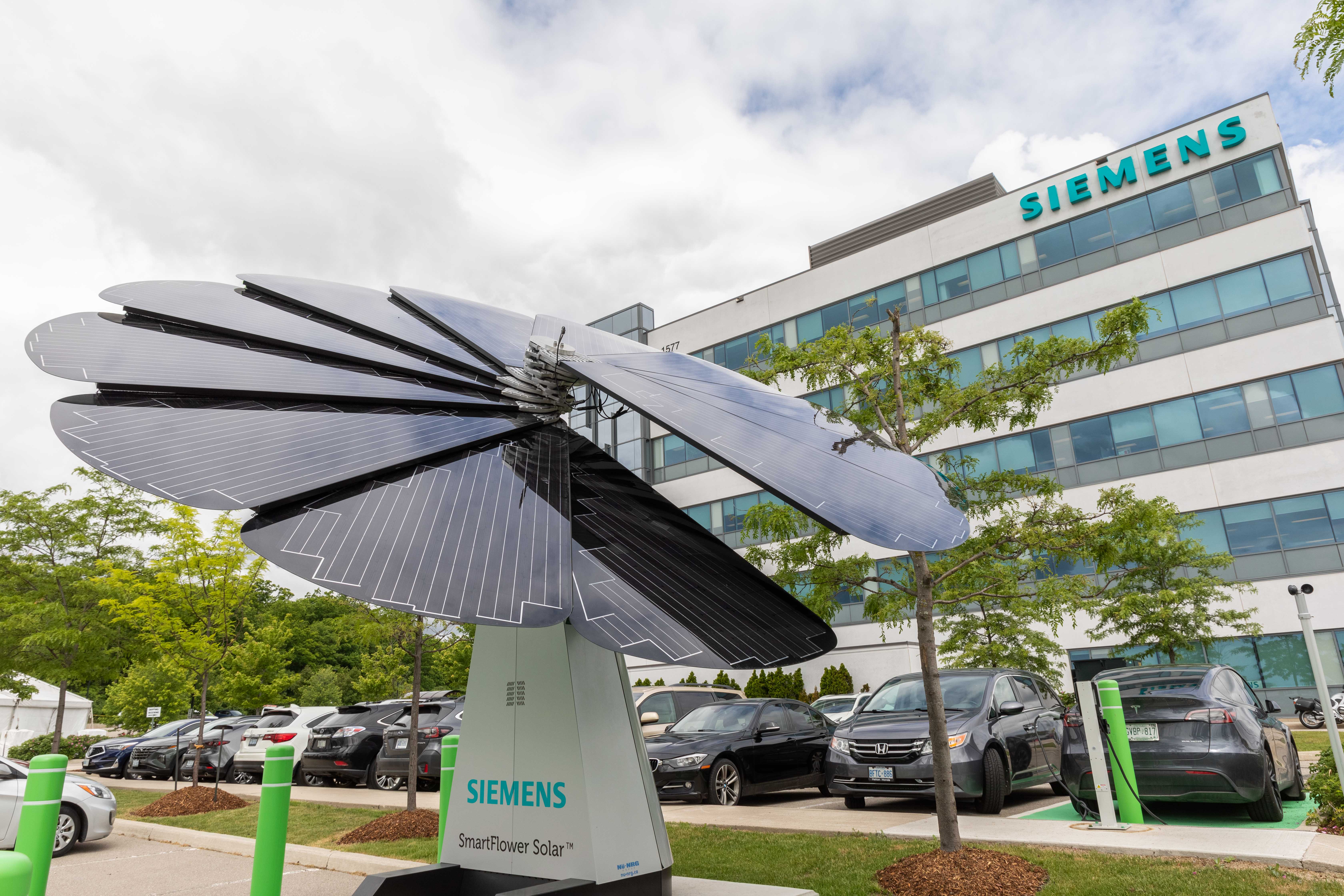Siemens Canada’s Net Zero Classroom Initiative (Em)-Powering Future Generations
Projects Sponsor
Siemens Canada launched the Net Zero Classroom initiative to address the critical need for educating students on renewable energy systems and microgrids. Microgrids offer localized, resilient, and efficient energy solutions, reducing carbon footprints and ensuring energy security. All in all, microgrids’ role in our sustainable future is almost as important as those students themselves. However, as an organization deeply involved in this field, Siemens noticed a gap in the industry: not enough technical know-how to operate these systems. Because of this, they set out to inspire a future generation of students with knowledge and enthusiasm for clean energy technologies. The goal was to ensure that these next generations take this passion into their personal and professional lives, advocating for and implementing green technologies.

Siemens is collaborating with high schools and higher educational institutes across the country to develop and implement lesson plans and curriculum. Additionally, they continue to engage others across Canada to help educate young Canadians on these important topics. Their experience with the SmartflowerTM solar technology at the first Net Zero Classroom site and their office demonstrated its ability to capture interest and stimulate engagement. As a global organization, their work on real-world microgrid projects provided valuable insights, confirming the essential role microgrids play in decentralized energy efficiency and resilience. New classroom locations will be announced in the coming months.
Siemens began by forming strategic partnerships with educational institutions to implement the Net Zero Classroom initiative. Each project, while unique, was built on a scalable framework designed for nationwide replication:
Partnership and Planning
Establish collaborations with schools, school boards, and government representatives. To do this, Siemens initiated discussions to understand specific needs, curriculum gaps, and logistical requirements. This included consultations with educational institutions ranging from high schools like Bishop James Mahoney to higher education institutes such as Humber Polytechnic.
Custom Design and Installation
Design and deploy tailored microgrid solutions. For each site, Siemens customized the microgrid setup, incorporating components like Smartflower™ solar panels, battery storage, and energy dashboards. The first installation at Bishop James Mahoney High School featured a Smartflower™ at the entrance, capturing student and community interest. At Humber Polytechnic, Siemens developed the Sustainable Microgrid and Renewable Technology (SMART) lab with solar photovoltaic emulators and electric vehicle chargers.
Curriculum Development and Integration
Develop and integrate specialized curricula. Siemens is working closely with educators to create lesson plans covering a variety of topics like renewable energy, electric vehicle integration, decarbonization, and microgrid control. At Bishop James Mahoney, the curriculum focused on practical applications of solar panels and battery storage, while at Humber Polytechnic, they piloted a microgrid introductory course and are developing a micro-credential program.
Hands-On Learning and Real-Time Monitoring
Implement systems for real-time energy monitoring and hands-on learning. Students engage with energy dashboards to monitor production and consumption, providing tangible experience with renewable technologies. For example, during a grid outage at Bishop James Mahoney, the microgrid allowed the classroom to continue to operate seamlessly, demonstrating real-world application and energy resiliency.
Community Engagement and Expansion
Broaden the initiative’s reach and foster community involvement. Siemens hopes to bring this offering to community and corporate spaces to continue to stimulate the conversation on renewable energy and smart energy systems while enabling the actual use of renewable energy to power building loads and EV chargers. Siemens conducts living lab tours and demonstrations, attracting politicians, corporate executives, and students at their Canadian Oakville headquarters.
Overcoming Obstacles
Address funding and curriculum integration challenges. Siemens will continue to leverage government and other sources of funding to help make this offering more accessible. Siemens is also creating modular offerings to deliver this opportunity to more students (STEM Kits, virtual simulations, etc.).
And each of those unique projects has shown great results. At Bishop James Mahoney High School, 120 students have received hands-on learning with the SmartflowerTM Microgrid including a notable occasion when, during a grid outage at the school, the science class was able to continue uninterrupted. The curriculum has expanded students’ understanding of solar panels, battery storage, and smart grids, inspiring interest in potential career paths in renewable energy, computer science, electrical systems, and data science.

Students at Humber Polytechnic, including industry professionals, were successfully introduced to distributed energy resources and microgrid operations, sparking an interest in related advanced courses and filling a critical gap in industry knowledge.
The SmartflowerTM Microgrid over at Siemens Canada’s headquarters has been featured in tours attended not only by students, but by politicians, corporate executives, municipalities, and employees all while bringing clean energy production at the Oakville facility to approximately 4000 kWh per year.
Students exposed to the Net Zero Classroom initiative have shown increased interest in pursuing careers in renewable energy and smart grid technologies.

With this strong foundation, Siemens can now turn to their next goal, nationwide scaling. By refining this scalable framework and continuously adapting to feedback, they aim to replicate this initiative in numerous high schools and higher education institutes across Canada, providing students with invaluable learning opportunities in renewable energy and smart grid technologies.
And they’re well on their way to achieving that goal. These already impressive successes have sparked interest within the Siemens ecosystem globally and among other Canadian provinces. Projects are already underway to replicate the model in new locations to be announced soon.
Siemens is successfully putting decarbonization on the curriculum, and that’s electrifying.













